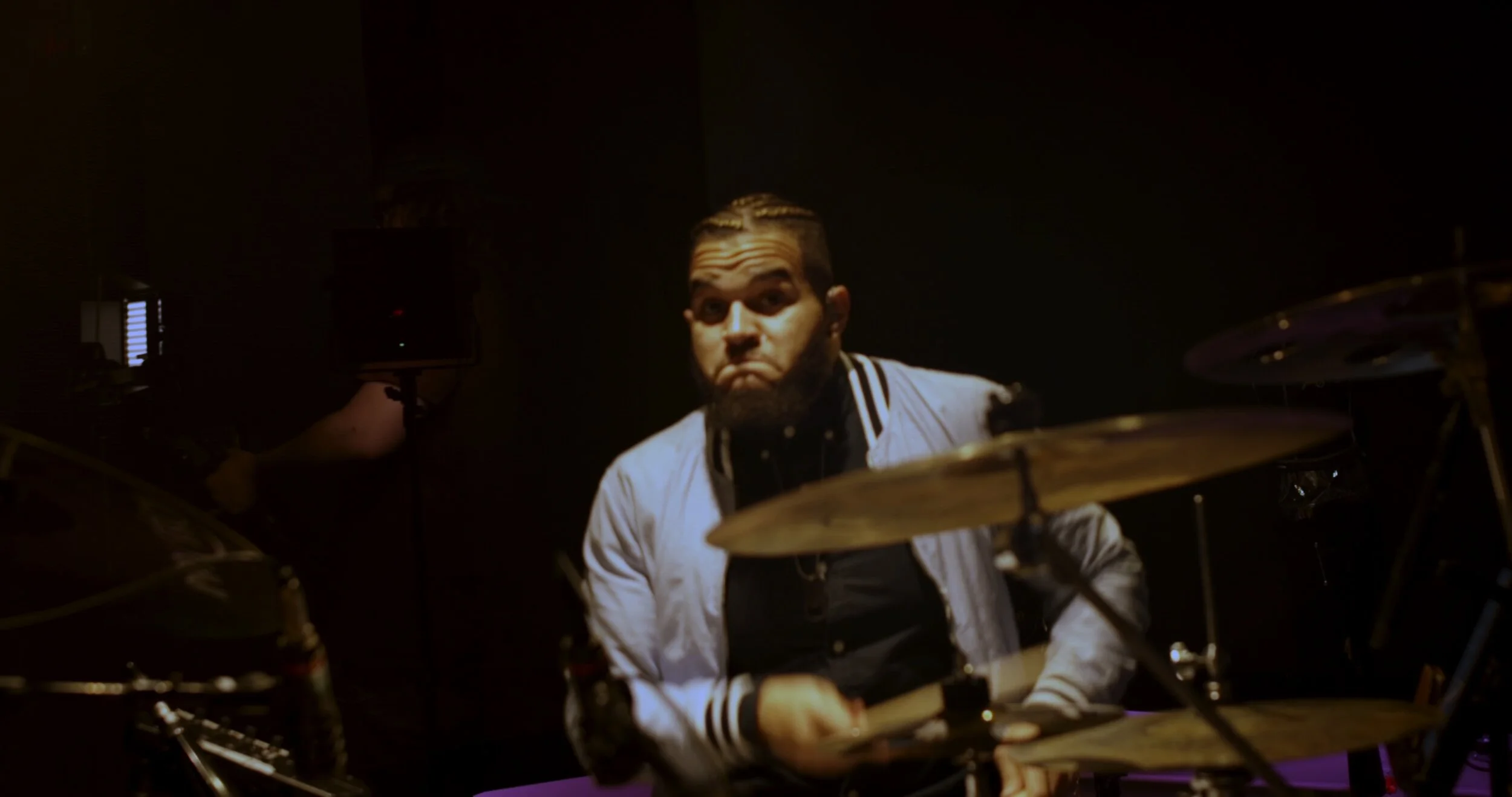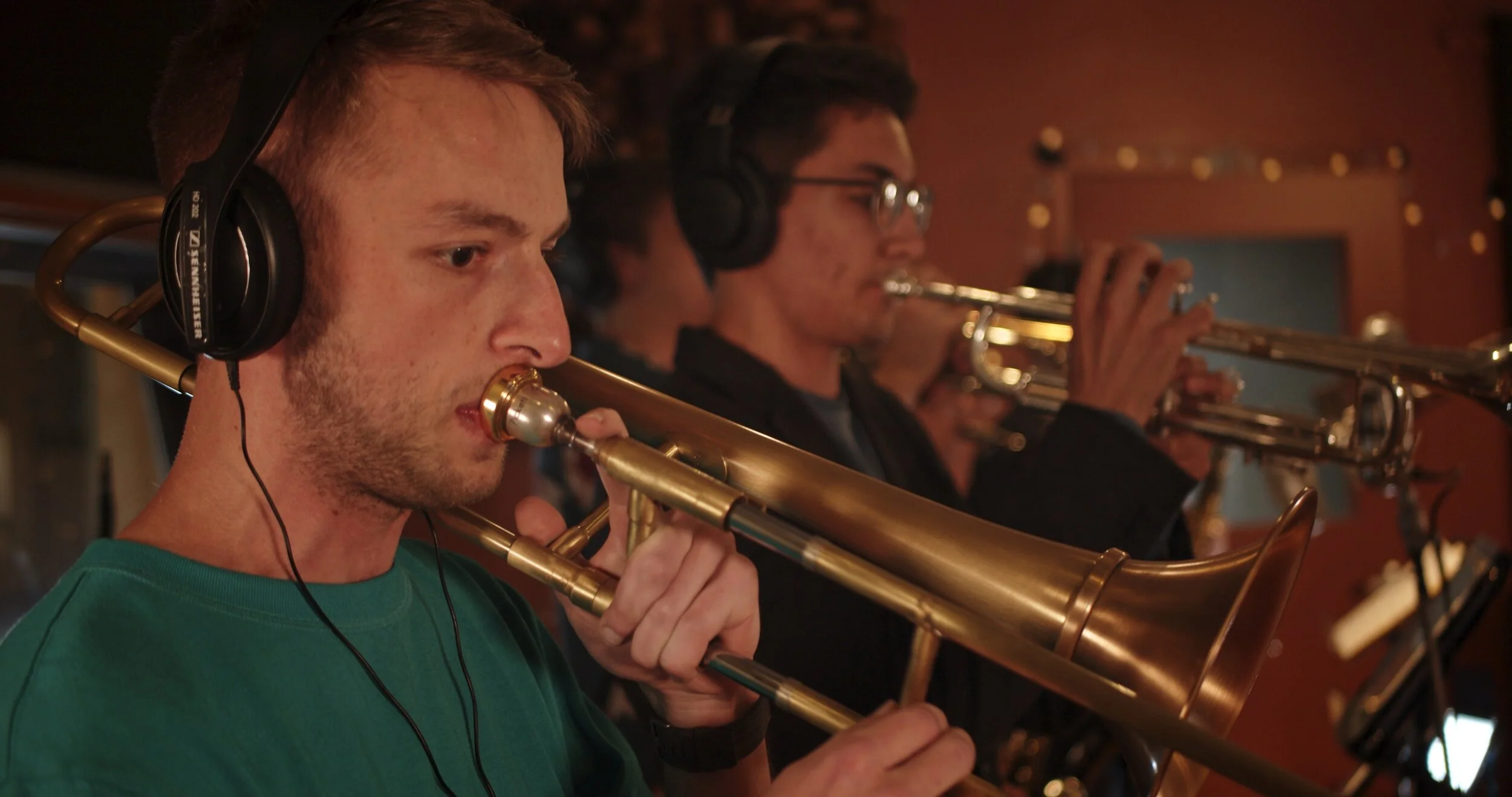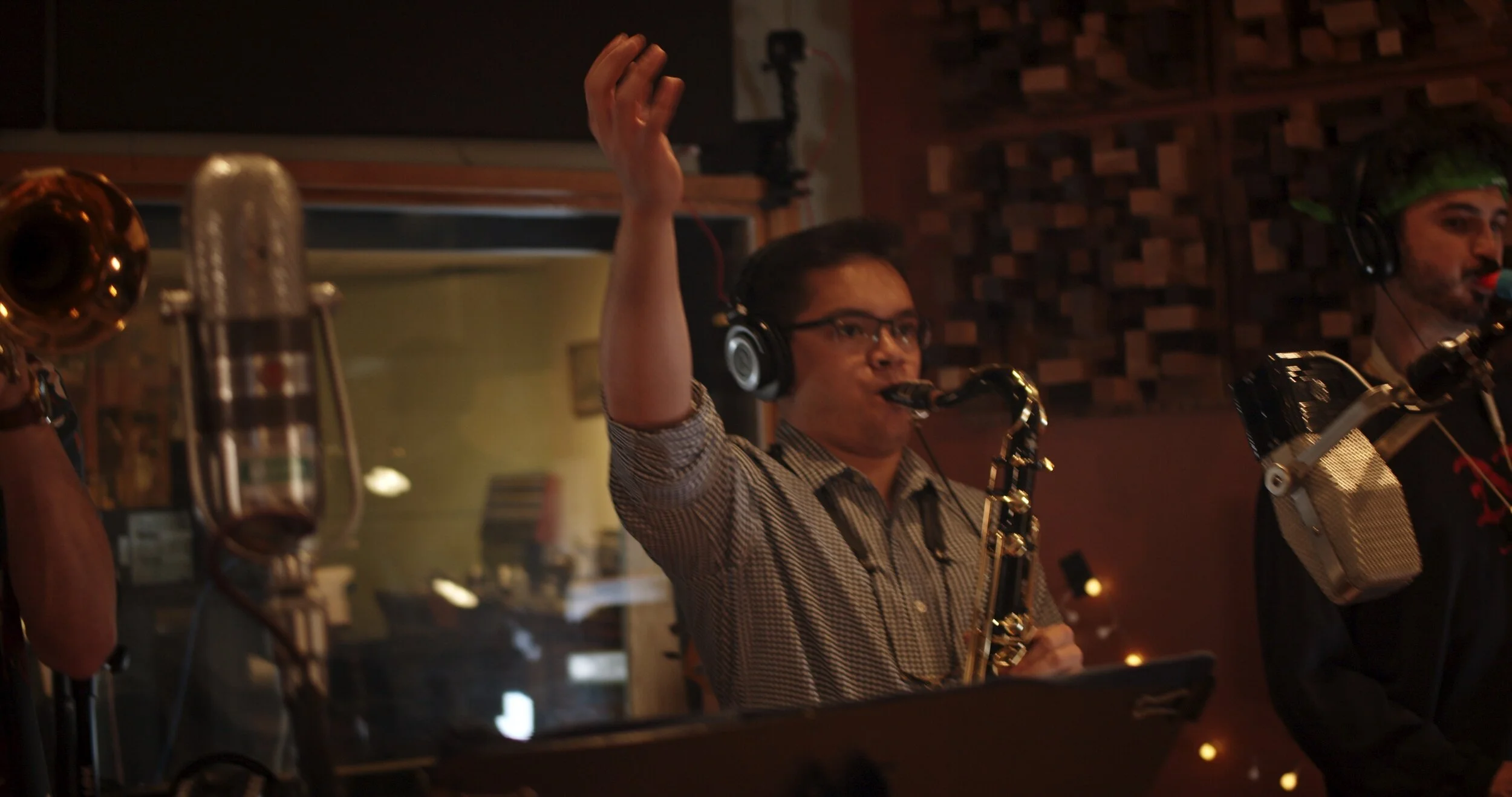Insaneintherainmusic Interview: The Year of Sinnoh Part 1
This past weekend, Carlos Eiene (aka insaneintherainmusic) unveiled his latest music video “Route 228 Jazz Arrangement”, another milestone in his “Year of Sinnoh”. For those who don’t know, Carlos has dedicated to the next twelve months of his musical career to paying tribute to his favorite gaming soundtrack of all time—Pokémon Diamond and Pearl. “Route 228 Jazz Arrangement” marks the beginning of a new chapter for Carlos and several other collaborators, including Peter Gillette of GHDY Productions.
When did you realize that you would need a larger ensemble for these arrangements including Route 228?
I wouldn't necessarily call it a realization that I needed a larger ensemble...it was more that I realized I had the option to do this! This all stemmed from the completion of my Jazz Video Game Medley project in the Spring of this year, where I arranged a three movement medley of video game music for big band and string orchestra. It was a gigantic undertaking, but it made me realize the tremendous value of incorporating live musicians into my productions. For the longest time, I had primarily been arranging and recording music all by myself, using virtual instruments and MIDI sequencing to take care of the instruments that I wasn’t able to play. After the Jazz Video Game Medley, I realized the final product would be so much better if I incorporated musicians who are passionate about music and have spent many years working and perfecting their skills on their instrument.
How did you choose the ensemble musicians?
The ensemble musicians in this group are all friends of mine from the Berklee College of Music. I’ve gotten to know each of these musicians from a variety of circumstances, such as meeting them in classes around school, playing recording sessions with them, or performing with them in other people’s recitals. I selected each of these musicians very specifically, which allowed me to arrange the music for each of their unique specific styles and strengths.
For existing arrangements, how did you accommodate the addition of other musicians?
It wasn’t too difficult of a process, actually! This ensemble I put together is pretty similar to the type of ensemble I typically arrange for when I work on my videos. Most of the adapting I had to do was slight changes in harmonization since I was writing for a horn section of five people. Otherwise, it was a pretty smooth transition—I just had to write the sheet music in a way where it’d make sense for someone else reading it! Some of my old sheet music suffers from a lack of clear legibility, haha, and I wanted to make sure that rehearsals would go as efficiently as possible.
How did you decide which tracks to record for this particular studio session?
This was such a tough choice! I knew it would all be Sinnoh music of course, since I’m currently working on my year-long tribute project to Pokémon Diamond and Pearl called “The Year of Sinnoh”. This specific ensemble was geared towards energetic jazz fusion-type music, very much in the vein of the band Snarky Puppy (probably my favorite band of all time!) I picked songs from Sinnoh that I wanted to arrange with these levels of energy. I also thought about the styles that I knew my ensemble players liked to play in, and tried to give everyone their own moment of spotlight somewhere in the list of music.
I also knew that these tracks would have to be performed live since I had a couple of live performances at Berklee lined up for this band! I chose songs that I thought would translate well in a live setting.
What factors did you have to consider when it came to the actual recording space? Did you have to be mindful of musician placement and room acoustics?
Yes, definitely! Our band is 12 people large, so we had to be very deliberate with where people were placed in the live room. Fortunately, instruments like fender rhodes, guitar, bass, EWI, and electric violin were super easy to record, since they just took a DI signal. The studio we recorded in also had three isolation booths, which were used to place the drum set, percussion, and the Leslie speaker for our Hammond organ. The biggest challenge was getting enough isolation for the piano, since it was in the same big room where the horn section was as well.
Did you have a plan for setting up the studio space?
Yes, we had one going in. I sent an input list to Joel Edinbergh (our recording engineer) a week or so before the session and sent him a rough sketch of the floor plan of the space in the days before the session.
Did you have to change that plan on the actual day of recording?
Just a little bit! Microphone-wise, everything that we specified in the input list stayed pretty much the same. We just ended up changing around the physical orientation of the musicians a little bit to facilitate good shots for the video crew!
How long did set-up and tear-down take? Did you have help?
Set-up was about a two and a half hour process! We had to take care of all mic placement, cabling, checking lines, and getting rid of any weird buzzing noises that can crop up in digital audio recording! Joel and his intern Bradley were the main two people leading setup, and members of the band chipped in to help wherever possible as well. The video crew also used that time to set up lighting and get all their gear set before we started giving takes. Tear down was shorter, and that took somewhere between an hour and an hour and a half.
How did you decide what to film?
Luckily, I didn’t have to make a ton of decisions in that front! Having Peter Gillette of GHDY and his crew there to help with the production was so helpful. There were four people total manning their own cameras, with a couple of extra stationary cameras placed around the room to capture drums and percussion. Before we started giving takes for each tune, I gave the video team a quick breakdown of the important instruments to focus on for each song, as well as any notable solos or melody lines that needed to be captured.
Deciding what to film during each take specifically was a bit of a challenge! Everyone in the band was wearing headphones, and most of us had our own mix box where we could control the amount of click we were hearing, and the amount of other instruments we’d like to hear in our ears. The video team, though, didn’t have this, so there were some instruments like electric violin, bass, and rhodes that weren’t actually making any acoustic sound in the room! Because of this, I tried to give the video team a heads up when any of these instruments would have a featured part, since they likely wouldn’t have any sort of auditory cue to direct them to capture that particular instrument.
Peter has also taken on some additional editing duties. What drove that decision?
After combing through most of the footage that Peter loaded onto one of my drives after completing the shoot, I realized just how much footage we were working with. A lot of the footage was at 4K resolution and filmed in RAW format, which is something I’m not super experienced at editing. Peter had previously offered to help me edit the footage, so I decided to take him up on this offer and have him take the primary editing job for this project. I knew that I could trust him to do this since he was actually present at the video shoot, has worked with other music YouTubers before, and is clearly aware of the complexities that arise specifically when editing a music video. This way, I also have more time to focus on arranging more music for future projects!
Were there any instruments/musicians that you had to record separately?
Yes, just for this particular video! Unfortunately, the band’s sousaphonist Ian was going out of town for the day of the recording session, so I had to track his part separately at a different time. Ian only plays on this one song with this particular band, but he’s a pleasure to work with. He even let me clip a GoPro to his sousaphone to get a fun video angle!
Mixing and mastering a large studio session like this must be a challenge. Do you have any tips or advice for other musicians who are doing live mixing and mastering?
It is a very large challenge, but it’s something that can be approached very systematically if you have the right process! First and foremost, keep your sessions organized! This means labeling your tracks properly, creating properly-named busses and sends, and getting your tracks color coded nicely—you want to make this process as easy as possible for yourself in the long term!
I usually go through this checklist: First, I turn all the faders completely down, and start mixing the drums with the drum bus master fader down at about -15 dB. This way, I’m giving myself plenty of headroom to make the mix appropriately loud enough later on! I make sure the drums sound good, then move onto the bass, and focus on making sure the drums and bass play together nicely. From there, I just move up in the band, bringing in things like guitars, keyboards, and percussion, and finally bring in the lead voices (the horns!) If you approach a mix with this systematic bottom-up approach, it’ll make your life much easier, since you never have to ask yourself the question “what do I do next?” Additionally, if you’re recording multiple songs during the same recording session, you can re-use a lot of plugin and volume settings from song to song, which makes your life much easier!
How long does it take to edit a live performance like this? How much footage do you generally record?
I can usually get a mix like this completely done in about three to four hours of the course of a few days. Usually, I’ll make my first preliminary mix, then bounce the audio file, and listen to it on as many different systems as possible (good headphones, bad headphones, phone speakers, laptop speakers, etc), and identify what problems seem to come up again and again. I’ll take that information, make some tweaks, and repeat that process a couple of times—usually I’ll go through about two or three rounds of edits before I call something a final mix!
As for the footage, it’s a few hundred GB worth of video. We did two or three takes for each of these songs during the session (two takes for this song in particular), and had six cameras running for each take!
What other tracks can we expect to see from this particular studio session?
I’ve got three more brand-new arrangements to unveil over the coming weeks, and two re-recorded arrangements of some of my favorite previous Sinnoh arrangements coming your way as well! Plus, there will likely be even more live sessions like this one happening in the months to come!
Carlos Eiene aka insaneintherainmusic.


